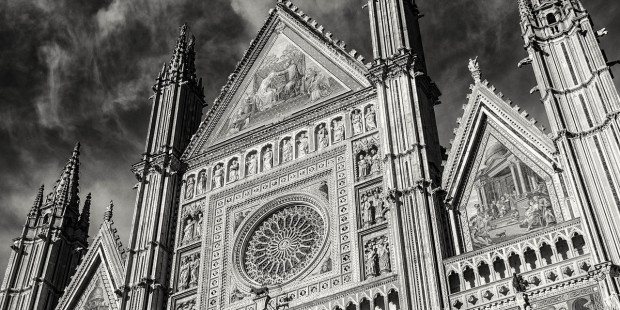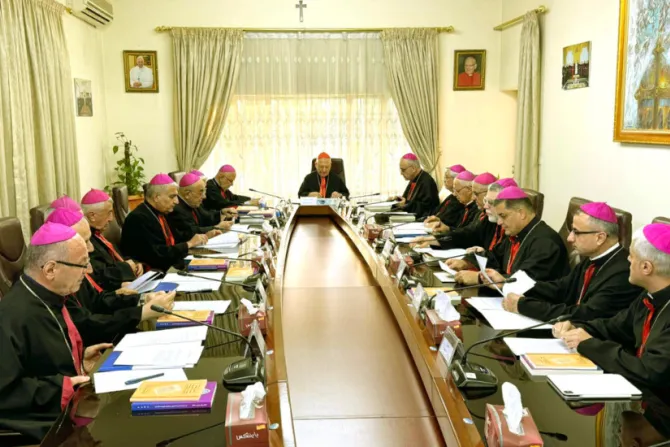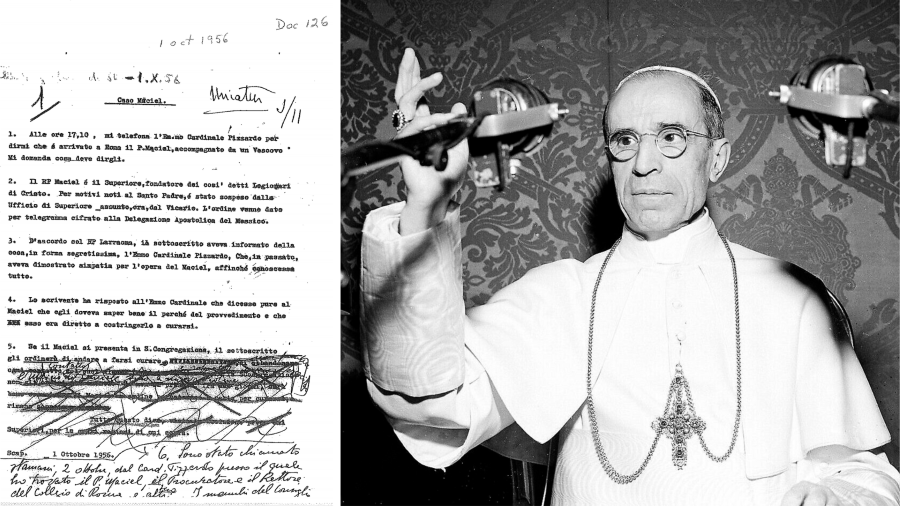Why We Need Dogma

Distinguishing Between Healthy and Unhealthy Guilt (Including hilarious video)
September 8, 2017
Meet The Centuries-Old Statue Some Say Protects St. Augustine, Florida From Hurricanes
September 8, 2017
By Tod Worner, Aleteia, Aug 31, 2017
 It is a curious thing.
It is a curious thing.
The Catholic Church can be (and has been) criticized for being or espousing many things that are diametrically opposed to one another. G.K. Chesterton expounded on this brilliantly in his 1908 masterpiece of apologetics, Orthodoxy. What he found emitting from vitriolic opinion-makers was simply confusing.
Christianity was reproached with its naked and hungry habits; with its sackcloth and dried peas. But the next minute Christianity was being reproached with its pomp and its ritualism; its shrines of porphyry and its robes of gold. It was abused for being too plain and for being too coloured. Again Christianity had always been accused of restraining sexuality too much, when Bradlaugh the Malthusian discovered that it restrained it too little. It is often accused in the same breath of prim respectability and of religious extravagance. Between the covers of the same atheistic pamphlet I have found the faith rebuked for its disunion, “One thinks one thing, and one another,” and rebuked also for its union, “It is difference of opinion that prevents the world from going to the dogs.”
Among the criticisms I heard (and perhaps even leveled prior to becoming Catholic myself), was that the Church is “dogmatic”. Now, unbeknownst to such critics, dogmatic does not mean harsh or dogged (even though many freely accuse the Church of these vices as well), but instead means adhering to dogma and promoting such “principles as incontrovertibly true.” Thus comes the accusation that the Church is “too sure that it is right” (a curious tendency of Truth) and is addled with endless councils, documents and rules that create complexity that clouds out God.
Surely, it is reasoned, we can have God without all this “religion.”
But just when you wipe clean the two thousand year history of revelation and reason that makes up the Catholic Church – two thousand years, as Chesterton observed, of the Church thinking about thinking and offering a well-versed map of the mind – you are not without dogma.
You are left with a dogma of your own creation.
When criticized by a fashionable writer that Chesterton would never be a first rate writer because he was a dogmatist, he puckishly replied,
“In truth, there are only two kinds of people; those who accept dogma and know it, and those who accept dogma and don’t know it.”
Dogma is the path by which the Church has humbly walked humankind through the world. For two thousand years and inspired by the Holy Spirit, the Church has used Reason and Revelation to better understand the nature of man and the guidance of Christ. And it hasn’t been a stroll. It has been, to quote Chesterton again, “one whirling adventure.”
To throw away dogma is to throw away a map when we are clearly lost. But to appreciate dogma is to recognize the battle for Truth. It is to see the fight of the saints and the plots of the sinners, the honest philosophies and the selfish heresies. To appreciate dogma is to sense the tragedies averted and the romance rescued. It is anything but a tangled web of legalisms and condemnation. It is a hand drawing us into the lifeboat when we have otherwise been perilously adrift at sea.
With his signature brilliance, Chesterton described the orthodoxy that results from dogma.
This is the thrilling romance of Orthodoxy. People have fallen into a foolish habit of speaking of orthodoxy as something heavy, humdrum, and safe. There never was anything so perilous or so exciting as orthodoxy. It was sanity: and to be sane is more dramatic than to be mad. It was the equilibrium of a man behind madly rushing horses, seeming to stoop this way and to sway that, yet in every attitude having the grace of statuary and the accuracy of arithmetic. The Church in its early days went fierce and fast with any warhorse; yet it is utterly unhistoric to say that she merely went mad along one idea, like a vulgar fanaticism. She swerved to left and right, so exactly as to avoid enormous obstacles. She left on one hand the huge bulk of Arianism, buttressed by all the worldly powers to make Christianity too worldly. The next instant she was swerving to avoid an orientalism, which would have made it too unworldly. The orthodox Church never took the tame course or accepted the conventions; the orthodox Church was never respectable. It would have been easier to have accepted the earthly power of the Arians. It would have been easy, in the Calvinistic seventeenth century, to fall into the bottomless pit of predestination. It is easy to be a madman: it is easy to be a heretic. It is always easy to let the age have its head; the difficult thing is to keep one’s own. It is always easy to be a modernist; as it is easy to be a snob. To have fallen into any of those open traps of error and exaggeration which fashion after fashion and sect after sect set along the historic path of Christendom – that would indeed have been simple. It is always simple to fall; there are an infinity of angles at which one falls, only one at which one stands. To have fallen into any one of the fads from Gnosticism to Christian Science would indeed have been obvious and tame. But to have avoided them all has been one whirling adventure; and in my vision the heavenly chariot flies thundering through the ages, the dull heresies sprawling and prostrate, the wild truth reeling but erect.
Dogma provides that one angle by which we can stand, that one path free of wreckage and eternal misery. It is the light of Christ in the darkness followed by saints no longer broken and sinners forever healed. To be sure, the Church doesn’t offer a path that is easy. It offers a path that is True.
That’s the nature of dogma.
Boy, do I need it.
Photo credit: Pixabay
https://aleteia.org/blogs/catholic-thinking/why-we-need-dogma/




